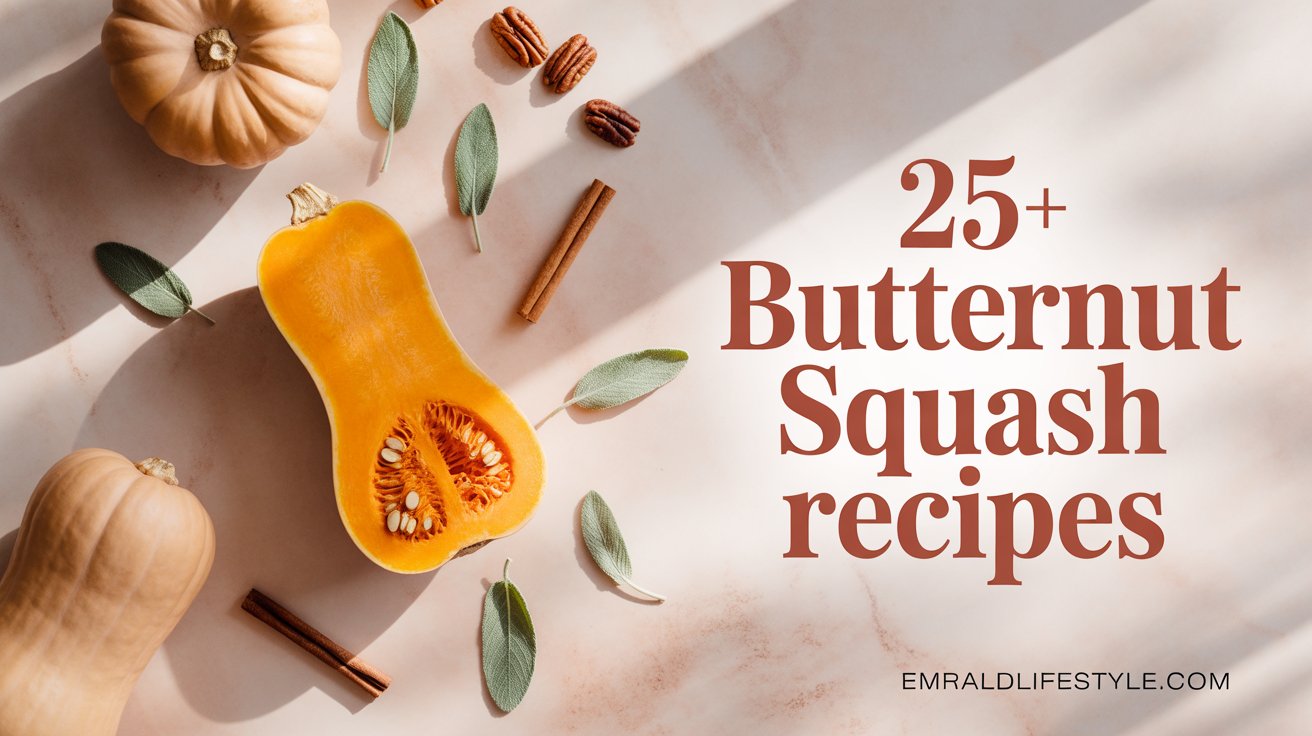Published: November 2025 | Last Updated: November 2025
When the leaves start turning golden and there’s a crisp chill in the air, I know it’s time to stock up on my favorite fall ingredient: butternut squash. After years of experimenting in my kitchen and perfecting dozens of butternut squash recipes, I’ve discovered that this versatile vegetable deserves way more credit than just being relegated to soup season.
Whether you’re a seasoned home cook or just starting your culinary journey, this comprehensive guide will walk you through everything you need to know about cooking with butternut squash—from selecting the perfect squash at the market to creating restaurant-quality dishes that’ll have your family asking for seconds.
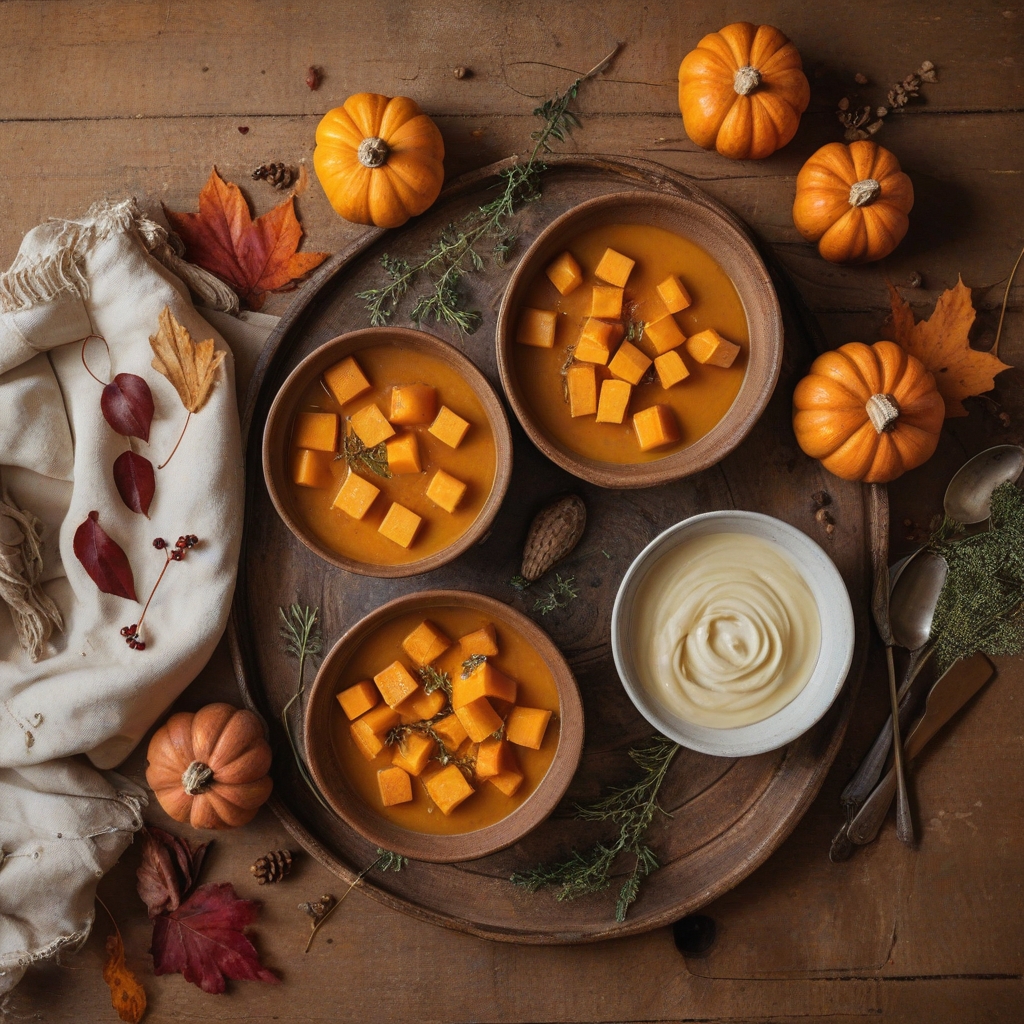
What Makes Butternut Squash So Special?
Before diving into the butternut squash recipes, let’s talk about why this ingredient has become such a staple in my autumn cooking rotation. Butternut squash (Cucurbita moschata) is technically a fruit, though we treat it like a vegetable in the kitchen. Its creamy texture, naturally sweet flavor, and nutritional powerhouse status make it one of the most versatile ingredients you can cook with.
Nutritional Benefits That Matter
| Nutrient | Amount per 1 Cup (Cooked) | % Daily Value |
|---|---|---|
| Calories | 82 | – |
| Vitamin A | 22,868 IU | 457% |
| Vitamin C | 31 mg | 34% |
| Potassium | 582 mg | 17% |
| Fiber | 6.6 g | 26% |
| Magnesium | 59 mg | 15% |
What makes butternut squash truly exceptional is its incredibly high vitamin A content—a single cup provides over four times your daily requirement. This vitamin A comes from beta-carotene, which gives the squash its vibrant orange color and supports eye health, immune function, and skin health.
The fiber content helps with digestion and weight management, while the potassium supports heart health and blood pressure regulation. At just 82 calories per cup, it’s a nutrient-dense food that fits perfectly into any healthy eating plan.
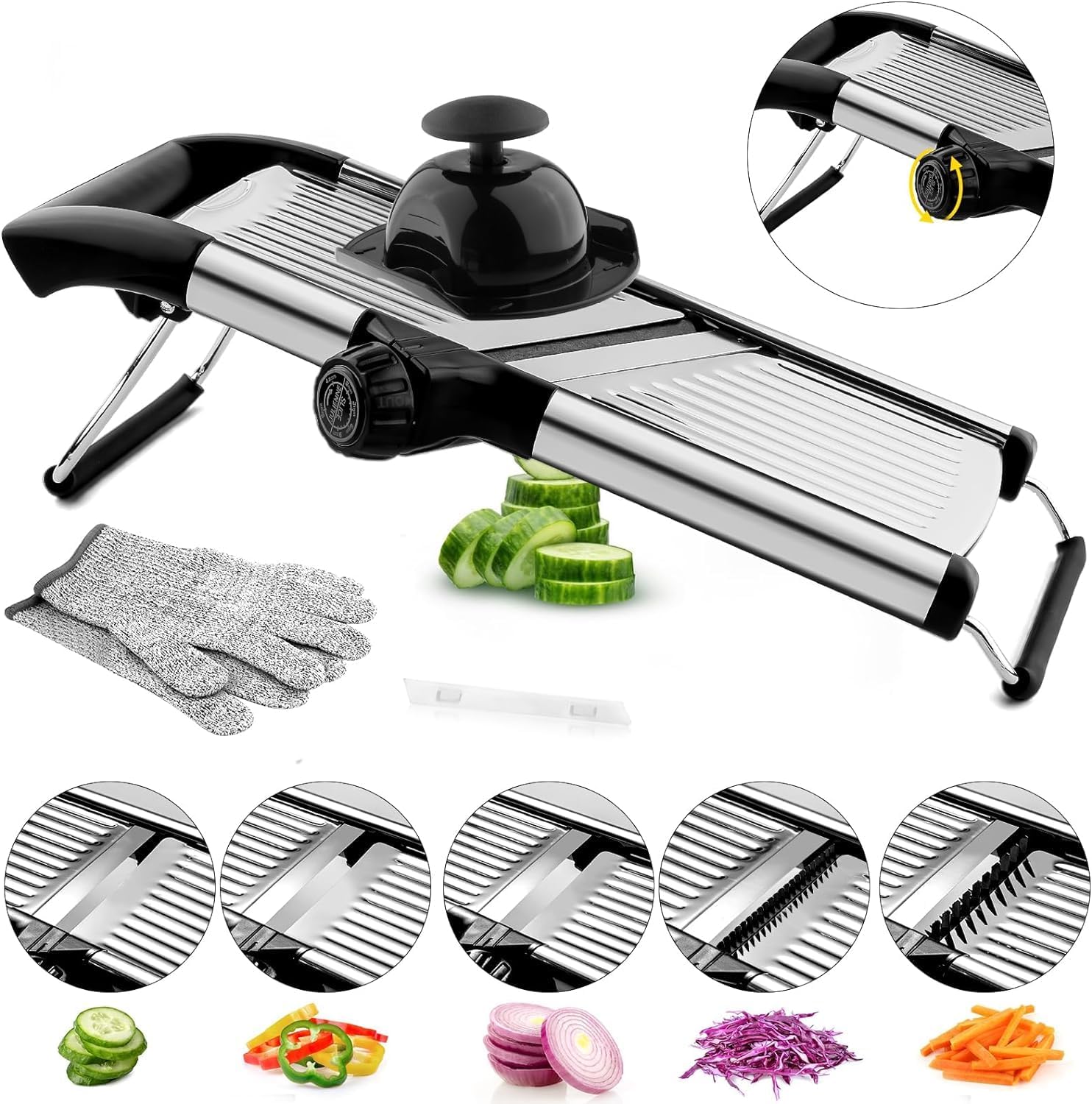
How to Cut Butternut Squash Safely (The Right Way)
One of the biggest barriers to cooking more butternut squash recipes is the intimidation factor of cutting this notoriously tough vegetable. I learned this lesson the hard way after nearly losing a fingertip in my early cooking days. Here’s the safe, foolproof method I now use every time.
The Microwave Softening Trick
This game-changing technique makes cutting butternut squash 10 times easier:
- Prick the whole squash 8-10 times with a fork
- Microwave on high for 2-3 minutes
- Let it cool for 1-2 minutes until safe to handle
- Proceed with cutting using the method below
This brief microwave session softens the tough skin just enough to make cutting safer without cooking the squash.
Step-by-Step Cutting Guide
Equipment you’ll need:
- Sharp 8-inch chef’s knife
- Sturdy cutting board (place a damp towel underneath for stability)
- Y-shaped vegetable peeler
- Large spoon
The process:
- Trim the ends: Lay the squash on its side and slice off ½ inch from both the stem and bottom ends
- Separate neck from bulb: Cut crosswise where the long neck meets the round bulb section
- Peel with confidence: Stand each piece on its flat end and use a Y-peeler to remove the skin in downward strokes
- Halve and seed: Cut each piece lengthwise and scoop out seeds with a spoon (save seeds for roasting!)
- Cut to size: Slice into planks, then strips, then cubes of your desired size
Pro tip: The rocking method works wonders for initial cuts. Instead of pressing straight down through the tough skin, place your knife on the squash and gently rock it back and forth while applying steady downward pressure.
[Image Prompt: Step-by-step photo collage showing the cutting process – whole squash with fork holes, separated neck and bulb, peeled pieces, halved with seeds visible, and final cubed pieces arranged neatly]
How to Choose and Store Butternut Squash
Selecting the Perfect Squash
When I’m at the farmer’s market or grocery store, I look for these signs of a ripe, quality butternut squash:
- Color: Solid beige or tan color with a matte finish (avoid green discoloration or shiny patches)
- Weight: Should feel heavy for its size—this indicates good moisture content
- Texture: Hard, smooth skin without soft spots, cuts, or blemishes
- Stem: Intact, dry, and woody (not green or damp)
- Sound: Makes a hollow sound when you knock on it with your knuckles
Storage Guidelines
| Storage Method | Duration | Best For |
|---|---|---|
| Whole, uncut (cool, dark pantry) | 1-2 months | Long-term storage |
| Cut, raw (refrigerator) | 3-5 days | Meal prep |
| Cooked (refrigerator) | 4-5 days | Leftovers |
| Frozen cubes | 10-12 months | Extended storage |
Freezing tip: Spread raw cubed squash on a parchment-lined baking sheet, freeze until solid, then transfer to freezer bags. This prevents clumping and allows you to use only what you need.
Can You Eat Butternut Squash Skin?
This is one of the most common questions I get about butternut squash recipes. The short answer: yes, it’s technically edible, but there are important considerations.
When roasted, the skin becomes tender enough to eat and adds extra fiber to your meal. However, the texture remains somewhat tough and chewy compared to the creamy interior. Most people find it less enjoyable than the flesh.
My recommendation:
- Peel for: soups, purées, mac and cheese, or any recipe where smooth texture matters
- Keep skin on for: roasting large wedges or halves where you’ll scoop out the flesh after cooking
- Personal preference: If you don’t mind the texture and want maximum fiber, go ahead and eat it!
25+ Butternut Squash Recipes by Category
Now let’s dive into the good stuff—the recipes! I’ve organized these butternut squash recipes by type so you can easily find exactly what you’re craving.
Soups and Stews (Comfort in a Bowl)
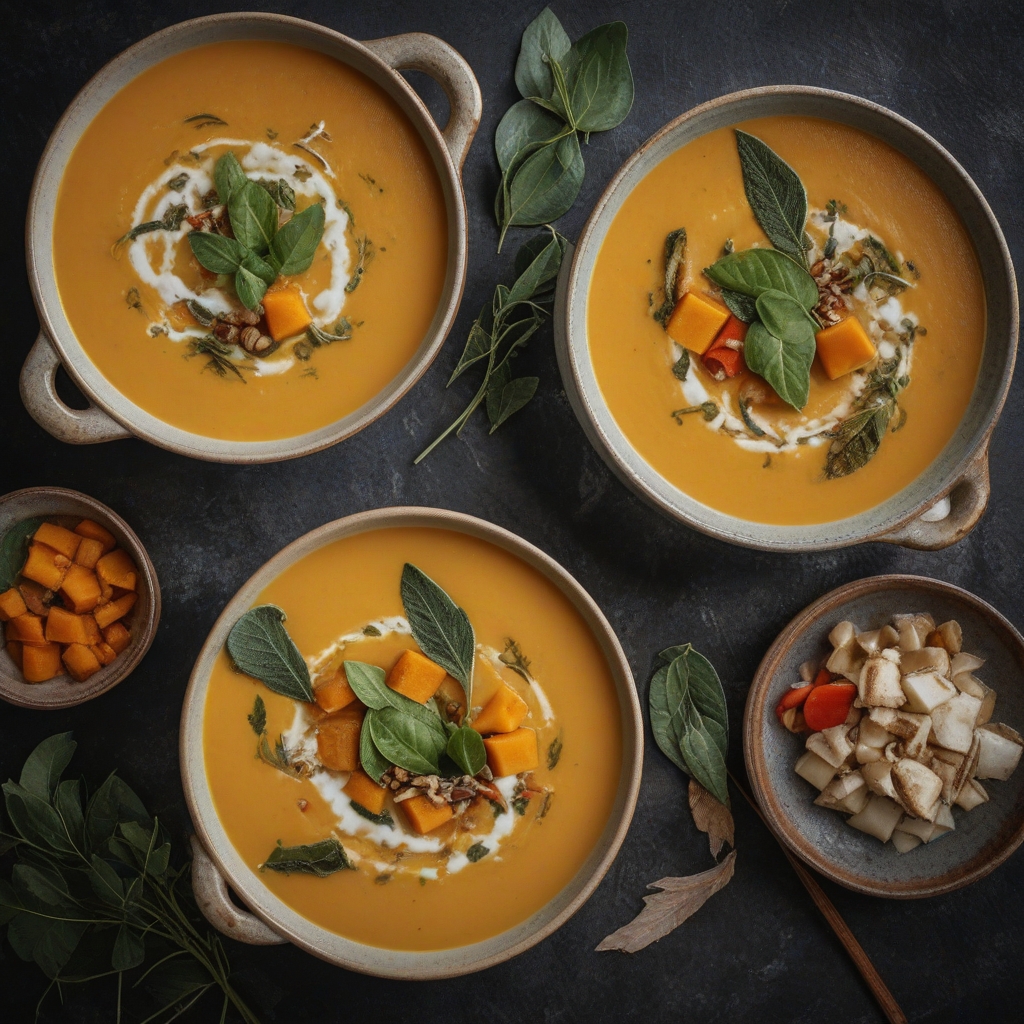
1. Classic Creamy Butternut Squash Soup
This is the recipe that started my love affair with butternut squash. Silky smooth, naturally sweet, and incredibly satisfying.
Key ingredients: Roasted butternut squash, onions, garlic, vegetable broth, coconut milk or heavy cream, sage
What makes it special: Roasting the squash first (rather than boiling) caramelizes the natural sugars and intensifies the flavor dramatically.
Serving suggestions: Top with toasted pumpkin seeds, crispy sage leaves, a swirl of cream, and freshly cracked black pepper.
2. Thai-Inspired Butternut Squash Soup
A vibrant twist on traditional squash soup with coconut milk, red curry paste, ginger, and lime.
Flavor profile: Sweet squash balanced with spicy curry, brightened with citrus and finished with cilantro.
3. Butternut Squash and Apple Soup
The combination of sweet squash and tart apples creates the perfect autumn flavor harmony.
Secret ingredient: A touch of maple syrup and warming cinnamon bring out the best in both ingredients.
4. Hearty Butternut Squash Stew
For those who want something more substantial than soup, this stew includes chickpeas, kale, and warming spices.
Why it works: The squash breaks down slightly during cooking, naturally thickening the broth while chickpeas add protein.
Main Dishes (Make It a Meal)
5. Butternut Squash Mac and Cheese
This is how you get kids (and adults!) to eat more vegetables. The squash purée creates an incredibly creamy sauce while reducing the amount of cheese needed.
The technique: Blend roasted butternut squash with sharp cheddar, Parmesan, milk, and a touch of nutmeg. Toss with pasta and bake with a breadcrumb topping.
Why families love it: You get all the comfort of traditional mac and cheese with a nutritional upgrade that doesn’t sacrifice flavor.
6. Stuffed Butternut Squash with Quinoa and Cranberries
Halved and roasted squash becomes an edible bowl for this festive, wholesome filling.
Filling components: Cooked quinoa, dried cranberries, toasted pecans, sautéed kale, goat cheese, and fresh herbs.
Perfect for: Vegetarian holiday meals, impressive dinner parties, or meal prep.
7. Butternut Squash Lasagna
This rich, comforting lasagna swaps traditional red sauce for a creamy butternut squash béchamel.
Layers: Lasagna noodles, butternut squash sauce, ricotta mixture, sautéed spinach, mozzarella, and Parmesan.
Make-ahead friendly: Assemble up to 24 hours ahead and bake when needed.
8. Butternut Squash Risotto
Creamy, luxurious, and surprisingly easy to make. The squash adds both color and subtle sweetness.
Key to perfect risotto: Stir in small cubes of roasted butternut squash during the last 5 minutes of cooking, then finish with butter, Parmesan, and crispy sage.
9. Butternut Squash and Black Bean Enchiladas
A hearty vegetarian main that’s perfect for weeknight dinners.
Filling: Roasted butternut squash cubes, black beans, corn, onions, and Mexican spices wrapped in tortillas and topped with enchilada sauce and cheese.
10. Sheet Pan Chicken with Butternut Squash
The ultimate one-pan dinner: chicken thighs with butternut squash, red onion, and Brussels sprouts.
Timing trick: Start the squash first, then add chicken halfway through for perfectly cooked components.

Pasta Dishes (Cozy Carbs)
11. Creamy Butternut Squash Pasta
Purée roasted squash with garlic, sage, and Parmesan to create a silky sauce that clings to every noodle.
Best pasta shapes: Pappardelle, fettuccine, or orecchiette all work beautifully.
Topping options: Crispy pancetta, toasted walnuts, fried sage, or sautéed mushrooms.
12. Butternut Squash Ravioli with Brown Butter Sage Sauce
Homemade ravioli filled with roasted butternut squash, ricotta, and Parmesan, served in a classic brown butter and sage sauce.
Time-saver: Use store-bought wonton wrappers instead of making pasta dough from scratch.
13. Butternut Squash and Sausage Orecchiette
Little “ear” shaped pasta cups filled with Italian sausage, butternut squash, and kale in a light garlic-white wine sauce.
Balance: The richness of sausage pairs perfectly with the sweet squash and bitter greens.
Salads (Fresh and Seasonal)
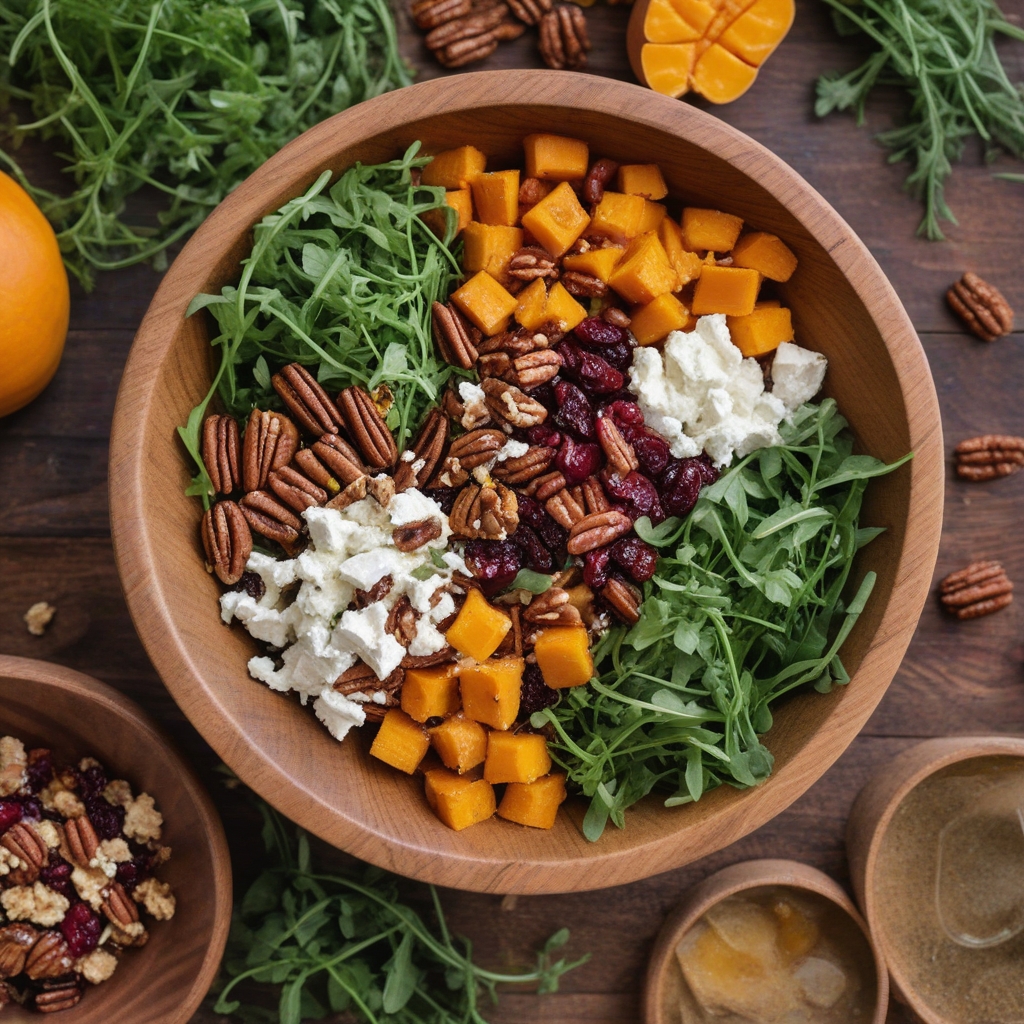
14. Roasted Butternut Squash Salad with Maple Vinaigrette
My go-to fall salad combines roasted squash with peppery arugula, dried cranberries, toasted pecans, and tangy goat cheese.
Dressing: Whisk together maple syrup, Dijon mustard, apple cider vinegar, and olive oil.
Make it a meal: Top with grilled chicken, seared salmon, or chickpeas for protein.
15. Warm Butternut Squash and Quinoa Salad
This hearty grain salad is perfect for meal prep and tastes even better the next day.
Components: Fluffy quinoa, roasted butternut squash, baby spinach, pumpkin seeds, feta cheese, and lemon-tahini dressing.
16. Butternut Squash Kale Salad
Massaged kale provides the sturdy base for this nutritious salad topped with roasted squash and a balsamic-maple dressing.
Pro tip: Massage the kale with a bit of olive oil and salt for 2-3 minutes to soften the tough leaves.
Side Dishes (Scene-Stealing Sides)
17. Classic Roasted Butternut Squash
Sometimes simple is best. Cubed squash tossed with olive oil, salt, pepper, and roasted until caramelized.
Temperature and timing: 400°F for 25-30 minutes, flipping halfway through for even browning.
Flavor variations:
- Maple-cinnamon (add 1 tablespoon maple syrup and ½ teaspoon cinnamon)
- Spicy (toss with smoked paprika, cumin, and cayenne)
- Herb-roasted (add fresh rosemary and thyme)
18. Hasselback Butternut Squash
This stunning presentation involves making thin cuts along a squash half, then roasting with maple brown butter.
Visual impact: The cuts fan out during roasting, creating an accordion effect that looks restaurant-worthy.
19. Butternut Squash Mash
A lighter alternative to mashed potatoes with half the carbohydrates.
Method: Roast squash until very tender, then mash with butter, a splash of cream, salt, pepper, and a pinch of nutmeg.
20. Scalloped Butternut Squash
Thinly sliced butternut squash layered with cream, garlic, and Gruyère cheese—like a lighter version of scalloped potatoes.
Mandoline essential: Use a mandoline slicer for uniform thickness that cooks evenly.
Breakfast and Brunch
21. Butternut Squash Pancakes
Yes, you read that right! Squash purée adds moisture and nutrition to fluffy pancakes.
Why they work: The squash acts like applesauce or mashed banana, keeping pancakes tender while adding fiber and vitamins.
Serving: Top with maple syrup, toasted pecans, and a dollop of Greek yogurt.
22. Butternut Squash Frittata
A protein-packed breakfast featuring roasted squash, kale, caramelized onions, and goat cheese.
Perfect for: Weekend brunch, meal prep, or serving a crowd.
Appetizers and Snacks
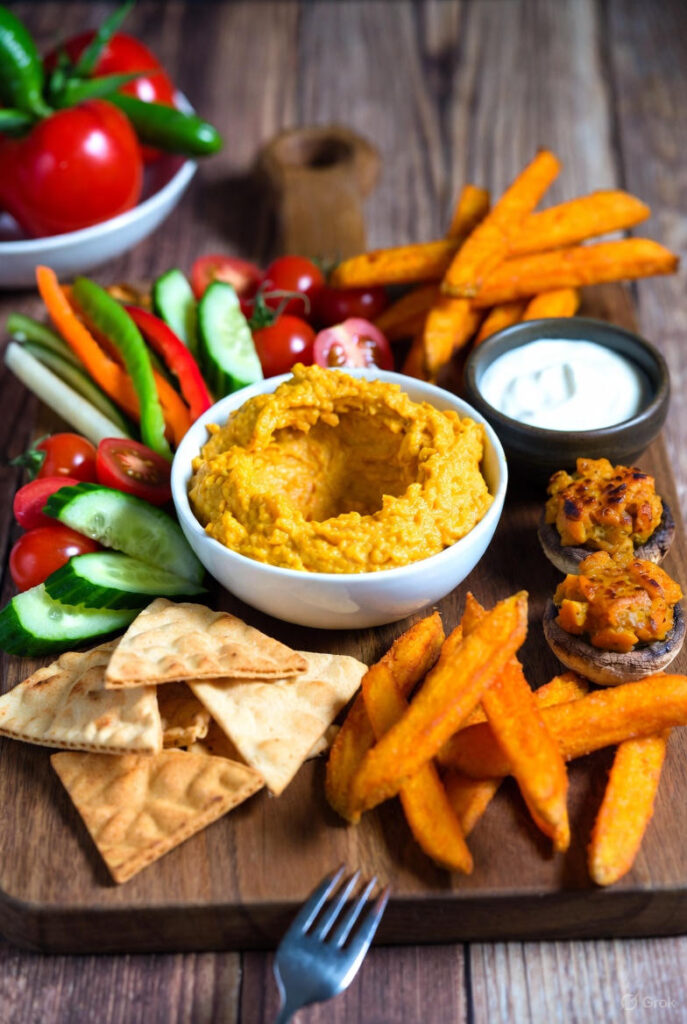
23. Butternut Squash Hummus
Roasted squash blended with chickpeas, tahini, garlic, lemon juice, and warming spices creates a unique dip.
Flavor notes: Slightly sweeter than traditional hummus with warming cinnamon and cumin.
24. Baked Butternut Squash Fries
Cut squash into fry-shaped pieces, season with spices, and bake until crispy on the outside and tender inside.
Spice options:
- Classic: salt, pepper, garlic powder
- Cajun: paprika, cayenne, oregano, thyme
- Sweet: cinnamon, brown sugar, pinch of salt
Dipping sauces: Garlic aioli, maple-Dijon sauce, or chipotle mayo.
25. Butternut Squash Pizza
Thinly sliced roasted squash becomes a delicious pizza topping alongside ricotta, mozzarella, sage, and a drizzle of honey.
Desserts (Yes, Really!)
26. Butternut Squash Pie
Similar to pumpkin pie but with a slightly nuttier, creamier flavor.
The secret: Roast the squash first (don’t boil) for concentrated flavor, then purée and use in place of canned pumpkin.
How Long Does It Take to Cook Butternut Squash?
Cooking time varies significantly depending on your method. Here’s a complete breakdown:
Cooking Methods Comparison Table
| Method | Temperature | Time | Best For |
|---|---|---|---|
| Roasting (cubes) | 400°F | 25-30 min | Salads, sides, general use |
| Roasting (halves) | 400°F | 40-50 min | Stuffing, scooping flesh |
| Steaming | – | 10-15 min | Mashing, soups, purées |
| Boiling | – | 7-10 min | Quick soups, baby food |
| Instant Pot | High pressure | 8-10 min | Fast soups, meal prep |
| Air Fryer | 375°F | 15-20 min | Crispy cubes, fries |
| Microwave | High | 10-12 min | Quick cooking, softening |
| Slow Cooker | Low | 4-6 hours | Soups, stews |
Testing for doneness: Insert a fork or knife into the thickest part—it should slide in easily with no resistance.
What Flavors Pair Well with Butternut Squash?
Understanding complementary flavors will help you create your own butternut squash recipes and improvise in the kitchen.
Sweet Additions
- Maple syrup
- Brown sugar or honey
- Cinnamon and nutmeg
- Vanilla extract
- Dried cranberries or raisins
- Apples and pears
Savory Pairings
- Sage (the classic pairing)
- Rosemary and thyme
- Garlic and onions
- Parmesan and aged cheeses
- Crispy pancetta or bacon
- Toasted nuts (pecans, walnuts, hazelnuts)
Bright Elements
- Lemon juice and zest
- Lime (especially with coconut milk)
- Balsamic vinegar
- Apple cider vinegar
- Fresh parsley or cilantro
Spices That Shine
- Cumin and coriander
- Curry powder
- Smoked paprika
- Cayenne pepper
- Ginger
- Ras el hanout
Is Butternut Squash Good for Weight Loss?
Absolutely! Butternut squash is one of the most diet-friendly vegetables you can incorporate into your meals. Here’s why it works:
The Weight Loss Benefits
Low in calories, high in volume: At just 82 calories per cup, butternut squash provides substantial volume that helps you feel full without consuming many calories. This is what nutritionists call “low energy density.”
Fiber content supports satiety: With 6.6 grams of fiber per cup, butternut squash keeps you feeling satisfied longer, reducing the likelihood of snacking between meals.
Low glycemic index: Butternut squash has a glycemic index of around 51, meaning it won’t cause rapid blood sugar spikes and crashes that trigger hunger.
Nutrient density: When you’re eating fewer calories for weight loss, every calorie needs to count nutritionally. Butternut squash delivers vitamins, minerals, and antioxidants efficiently.
Versatility: One of the biggest challenges in weight loss is food boredom. The variety of butternut squash recipes means you can enjoy it multiple ways without getting tired of it.
Smart Swaps for Weight Loss
- Replace half the pasta in mac and cheese with butternut squash
- Use butternut squash mash instead of mashed potatoes (saves ~100 calories per serving)
- Swap half the rice in a grain bowl with roasted butternut squash cubes
- Use butternut squash purée to add creaminess to soups instead of heavy cream
Can You Prepare Butternut Squash Ahead of Time?
Yes! Meal prep with butternut squash is one of my favorite time-saving strategies. Here’s how to do it right:
Prep-Ahead Options
Raw cubed squash: Peel, cube, and store in an airtight container in the refrigerator for 3-4 days. This is perfect for when you want to roast fresh.
Pre-roasted cubes: Roast a large batch, cool completely, then refrigerate for up to 5 days or freeze for up to 3 months. Add directly to salads, grain bowls, or pasta dishes.
Butternut squash purée: Roast and purée, then freeze in ice cube trays. Once frozen, pop out and store in freezer bags. Perfect for adding to soups or smoothies.
Partially cooked for soups: Steam or boil cubes until just tender, cool, and freeze. This cuts 15 minutes off soup-making time.

Butternut Squash Recipes for Special Diets
Vegan Butternut Squash Recipes
The natural creaminess of butternut squash makes it perfect for vegan cooking:
- Butternut squash soup with coconut milk
- Vegan butternut squash pasta with cashew cream
- Stuffed squash with quinoa, lentils, and tahini drizzle
- Butternut squash curry with chickpeas
Gluten-Free Options
Butternut squash is naturally gluten-free and works beautifully in:
- Gluten-free pasta dishes (use rice or chickpea pasta)
- Butternut squash rice bowls
- Naturally gluten-free soups and stews
- Roasted squash salads

Keto and Low-Carb Considerations
While butternut squash does contain carbohydrates (21g per cup), it can fit into a flexible low-carb diet in moderate portions. For strict keto, use small amounts as a flavor accent rather than the main component.
Paleo-Friendly
Butternut squash fits perfectly into paleo eating:
- Roasted squash with compliant proteins
- Butternut squash hash with eggs
- Dairy-free soups and stews
Common Mistakes When Cooking Butternut Squash
After testing dozens of butternut squash recipes, I’ve learned what to avoid:
Mistake #1: Crowding the Pan
The problem: When cubes are too close together, they steam instead of roast, resulting in mushy instead of caramelized squash.
The fix: Spread cubes in a single layer with space between each piece. Use two pans if necessary.
Mistake #2: Cutting Uneven Pieces
The problem: Different sizes cook at different rates, leaving some pieces undercooked and others mushy.
The fix: Take time to cut uniform cubes—aim for 1-inch pieces if your recipe doesn’t specify.
Mistake #3: Not Drying After Washing
The problem: Excess moisture on the squash prevents browning and causes steaming.
The fix: Pat pieces completely dry with paper towels before tossing with oil.
Mistake #4: Using Too Little Oil
The problem: Not enough oil means poor heat transfer and sticking to the pan.
The fix: Use about 2 tablespoons of oil per pound of squash—just enough to coat lightly.
Mistake #5: Forgetting to Season
The problem: Squash can taste bland without proper seasoning.
The fix: Season generously with salt and pepper before roasting, or season when adding to dishes.
Frequently Asked Questions
Do You Need to Peel Butternut Squash for Roasting?
It depends on your recipe and preference. The skin is edible but remains somewhat tough even when fully cooked. I recommend peeling for:
- Soups and purées
- Pasta dishes
- Mashing
- Any recipe where smooth texture matters
You can leave the skin on when roasting large halves or wedges that you’ll scoop out after cooking.
Can Butternut Squash Seeds Be Eaten Like Pumpkin Seeds?
Absolutely! Don’t throw away those seeds. Rinse them to remove the stringy bits, pat dry, toss with olive oil and your choice of seasonings, then roast at 325°F for 15-20 minutes until golden and crispy.
Seasoning ideas: salt and pepper, cinnamon sugar, curry powder, or everything bagel seasoning.
How Do You Know When Butternut Squash Is Fully Cooked?
The squash is done when:
- A fork or knife easily pierces the flesh with no resistance
- The edges have caramelized and turned golden brown (for roasting)
- The texture is tender but not mushy
- It can be easily mashed with a fork
Why Is My Roasted Butternut Squash Mushy?
This usually happens when:
- Pieces were cut too small
- It was cooked too long
- The oven temperature was too low
- Pieces were crowded and steamed rather than roasted
For best results, use 1-inch cubes, 400°F oven temperature, single layer with spacing, and check at 20 minutes.
Maximizing Flavor in Your Butternut Squash Recipes
After making hundreds of batches, here are my top flavor-boosting techniques:
Technique #1: Roast Instead of Boil
Roasting caramelizes the natural sugars in butternut squash, creating deep, complex flavors that boiling simply can’t achieve. The higher heat also concentrates the flavor as moisture evaporates.
Technique #2: Add Fat for Carotenoid Absorption
Since vitamin A from beta-carotene is fat-soluble, adding healthy fats like olive oil, butter, or nuts enhances both flavor and nutrition. Your body absorbs up to 6 times more carotenoids when squash is eaten with fat.
Technique #3: Brown Butter Magic
For an instant upgrade to any butternut squash recipes, replace regular butter with brown butter. Cook butter over medium heat until the milk solids turn golden and smell nutty—this adds incredible depth to squash dishes.
Technique #4: Layer Your Seasonings
Don’t just season at the end. Season the raw squash before roasting, then adjust seasoning again after cooking. This layered approach builds more complex flavor.
Technique #5: Add Acid to Balance Sweetness
A squeeze of lemon juice, splash of vinegar, or sprinkling of Parmesan cheese provides acidity that balances the natural sweetness of squash and makes the overall dish more interesting.
My Personal Favorite Butternut Squash Recipe
If I had to choose just one recipe to make for the rest of my life, it would be my Maple-Cinnamon Roasted Butternut Squash with Crispy Sage. It’s simple enough for weeknights but impressive enough for holiday tables.
What you’ll need:
- 1 large butternut squash (about 3 pounds), peeled and cubed
- 3 tablespoons olive oil
- 2 tablespoons pure maple syrup
- 1 teaspoon ground cinnamon
- 1 teaspoon kosher salt
- ½ teaspoon black pepper
- Fresh sage leaves
- 2 tablespoons butter
The method:
- Toss squash with oil, maple syrup, cinnamon, salt, and pepper
- Roast at 400°F for 25-30 minutes until caramelized
- Meanwhile, fry sage leaves in butter until crispy
- Drizzle the brown butter over roasted squash and top with crispy sage
Why it’s perfect: The maple syrup enhances the natural sweetness, cinnamon adds warmth, and the crispy sage provides a savory counterpoint that prevents it from being too sweet.
[Image Prompt: Close-up of a serving platter filled with golden, caramelized butternut squash cubes drizzled with brown butter and topped with crispy sage leaves, with a serving spoon beside it]
Final Thoughts on Butternut Squash Recipes
Throughout my years of cooking with butternut squash, I’ve learned that this humble vegetable is one of the most rewarding ingredients to master. The variety of butternut squash recipes you can create is virtually endless—from cozy soups to elegant mains to surprising desserts.
What I love most is how forgiving butternut squash is for beginners while still offering enough complexity to keep experienced cooks interested. Whether you’re making a simple roasted side dish or an elaborate stuffed squash, the sweet, nutty flavor and creamy texture delivers every time.
Don’t let the tough exterior intimidate you. With the proper techniques for cutting and preparing butternut squash, you’ll find it becomes second nature. The nutritional benefits, combined with its incredible versatility and delicious flavor, make it absolutely worth adding to your regular cooking rotation.
Start with one simple recipe—perhaps the classic roasted butternut squash—and gradually expand your repertoire. Before long, you’ll be creating your own variations and wondering how you ever cooked fall meals without it.
What’s your favorite way to prepare butternut squash? Have you tried any of these recipes, or do you have creative variations to share? Drop a comment below—I’d love to hear about your butternut squash adventures!
Pin this guide for later and share it with friends who love fall cooking!

